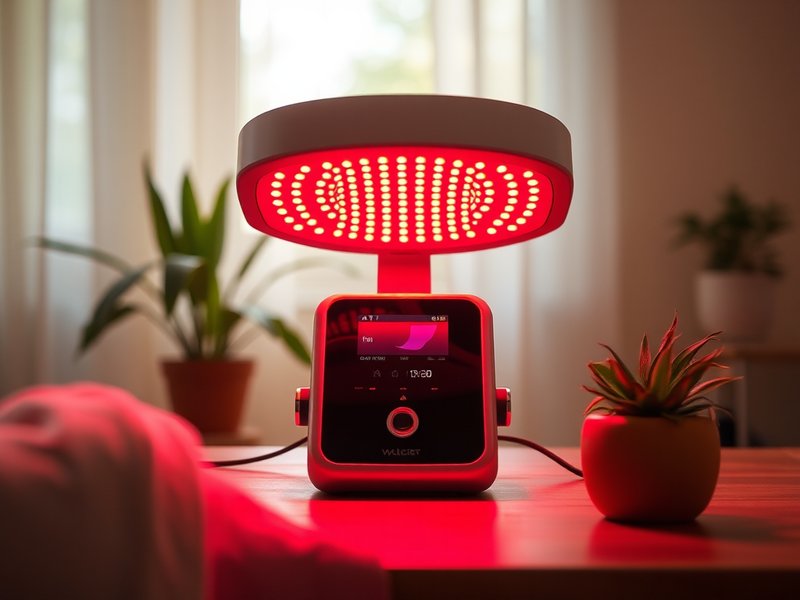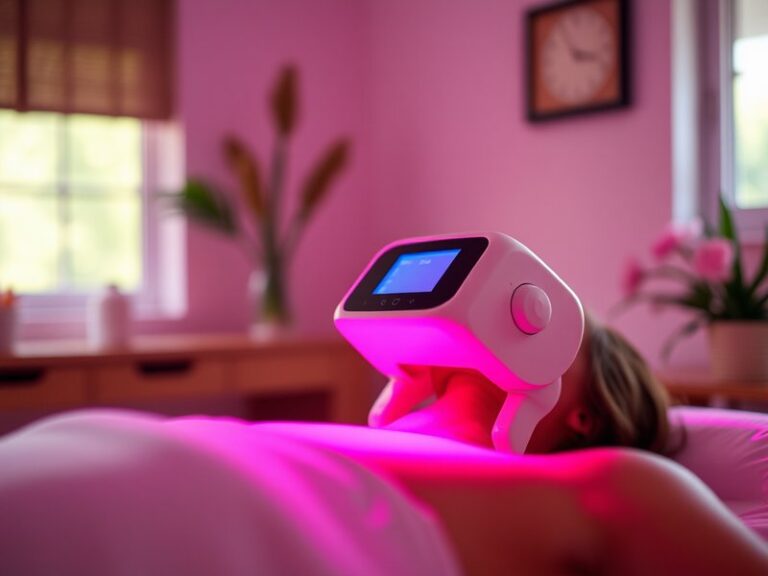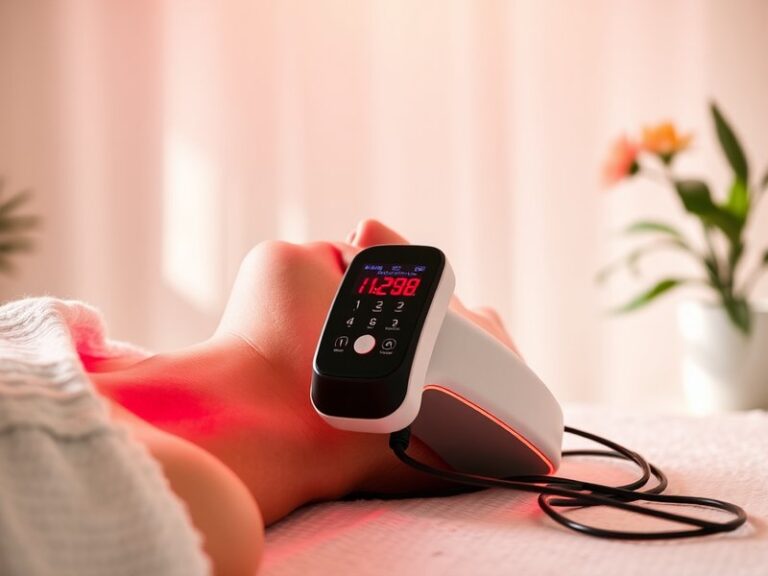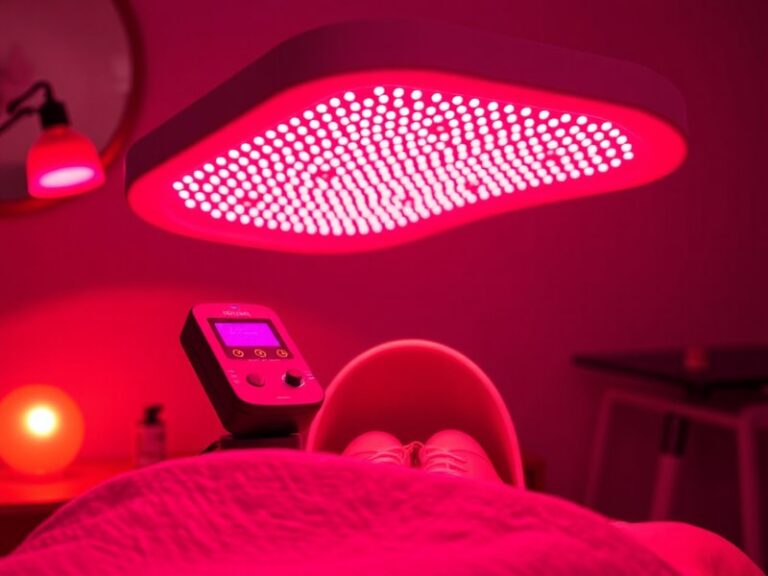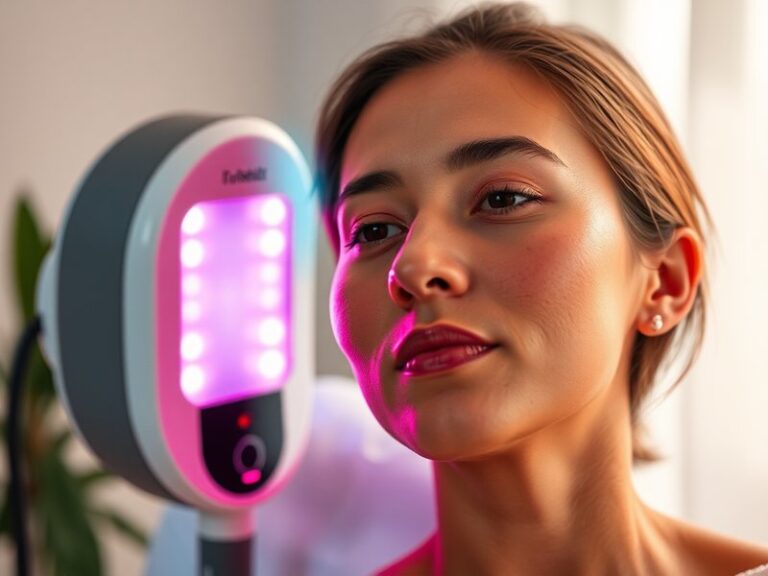How Long Do I Use Red Light Therapy?
How Long Do I Use Red Light Therapy?
Have you been considering incorporating red light therapy into your wellness routine but are unsure about how long the sessions should last?
This article will explore the recommended duration for red light therapy usage, the benefits it offers, considerations you should keep in mind, and alternatives to this treatment. By the end, you will have a comprehensive understanding of how to effectively implement red light therapy into your life.
Key Takeaways
- Session duration typically ranges from 10 to 30 minutes, depending on the treatment goal.
- Consistency is key; 3 to 5 sessions per week is often recommended for best results.
- Safety precautions and skin sensitivity are important considerations before starting therapy.
What is Red Light Therapy?
Red light therapy (RLT), also known as low-level laser therapy (LLLT), is a treatment that utilizes low wavelengths of red light to promote healing and rejuvenation of the skin. Commonly used in various therapeutic applications, RLT works at a cellular level to stimulate mitochondria, which are responsible for energy production in cells.
This therapy is often applied through handheld devices, panels, or in specialized clinics. It aims to enhance collagen production, reduce inflammation, and promote blood circulation, making it a popular choice for skin treatments, pain relief, and overall wellness.
RLT can be administered both at home with personal devices and at professional appointments, allowing for flexibility in treatment planning.
What are the Benefits of Red Light Therapy?
The following points will explore the advantages of incorporating red light therapy into your wellness regimen.
Enhanced Skin Health
Red light therapy has been shown to improve skin tone, texture, and overall appearance. Studies indicate that RLT can reduce wrinkles and fine lines while promoting wound healing, making it a popular choice for anti-aging treatments.
Pain Relief and Muscle Recovery
Athletes and active individuals benefit from RLT for its ability to reduce pain and accelerate muscle recovery. The therapy can alleviate soreness and inflammation, helping athletes return to their routines faster.
Improved Mood and Sleep Quality
Several studies suggest that red light therapy can enhance mood and increase sleep quality. By reducing inflammation and stress levels, users may experience greater relaxation and improved overall mental health.
Boosted Hair Growth
RLT is also gaining traction as a treatment for hair loss. Research indicates that it can stimulate hair follicles, leading to increased hair growth and density in individuals suffering from conditions like androgenetic alopecia.
Is it Possible to Overuse Red Light Therapy?
While red light therapy is generally safe, it is essential to consider the feasibility of excessive use. Overdoing RLT sessions may not yield faster results and could increase sensitivity or irritate the skin.
What are the Advantages of Regulating Usage?
Regulating session frequency and duration ensures that you maximize benefits while minimizing the risk of side effects.
What are the Disadvantages of Overusing Treatment?
Overusing red light therapy could lead to skin irritation, causing discomfort. It might also diminish the effectiveness of the treatment by desensitizing the skin.
See the full explanation Can Red Light Whiten Teeth?
What are the Things to Consider Before Starting Red Light Therapy?
Before beginning red light therapy, it’s essential to take several factors into account.
Consultation with a Healthcare Provider
Before starting RLT, consult a healthcare provider, especially if you have existing skin conditions or other medical issues. This step ensures that red light therapy is appropriate for you.
Skin Sensitivity
Understand your skin sensitivity—start with shorter sessions to gauge your skin’s response. Some individuals might find even low-level exposure can trigger irritation or adverse reactions.
Device Quality
Make sure you choose a high-quality red light therapy device. Research and reviews can guide you in selecting a reliable option that provides the appropriate wavelength for effective treatment.
Frequency of Treatment
Consider how often you can realistically commit to RLT sessions. Consistency is crucial for achieving the desired results, so setting a feasible schedule is important.
What are the Alternatives to Red Light Therapy?
If red light therapy doesn’t seem like the right fit for you, there are several alternatives to consider.
Infrared Therapy
Infrared therapy uses infrared light to deeply penetrate tissues, offering similar benefits in pain relief and muscle recovery, making it ideal for those seeking deep tissue treatment.
Cryotherapy
Cryotherapy, which uses extreme cold to promote healing and reduce inflammation, can be a powerful alternative for athletes and those with chronic pain issues, providing a different approach to recovery.
Topical Treatments
For skin health, topical treatments such as retinoids and hyaluronic acid can effectively address similar issues to RLT, providing anti-aging benefits with consistent use.
Conclusion: Is it Recommended to Use Red Light Therapy?
Red light therapy can be an effective treatment option for improving skin health, alleviating pain, and enhancing overall well-being. While the recommended session duration typically ranges from 10 to 30 minutes, depending on individual goals, consistency and safety precautions should also be prioritized. Consult a healthcare provider to ensure it’s a suitable option for you and consider your lifestyle and commitment when determining how to incorporate RLT into your routine.
Frequently Asked Questions
How long should I use red light therapy for best results?
Most practitioners recommend sessions lasting between 10 to 30 minutes, with 3 to 5 sessions per week for optimal results.
Get the scoop on La Tan Red Light Therapy?
Can I use red light therapy every day?
While daily use can be beneficial, it’s essential to listen to your body and adjust frequency as needed to avoid skin irritation or sensitivity.
Are there any side effects of red light therapy?
Although it is generally considered safe, some individuals may experience mild skin irritation. Always start with shorter sessions to assess how your skin responds.
Is red light therapy suitable for everyone?
Not necessarily. Individuals with certain skin conditions or those taking photosensitizing medications should consult a healthcare provider before starting RLT.
Can I use red light therapy at home?
Yes, many effective devices are available for at-home use. Ensure you select a high-quality device and follow the manufacturer’s guidelines for safe usage.
